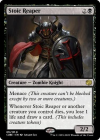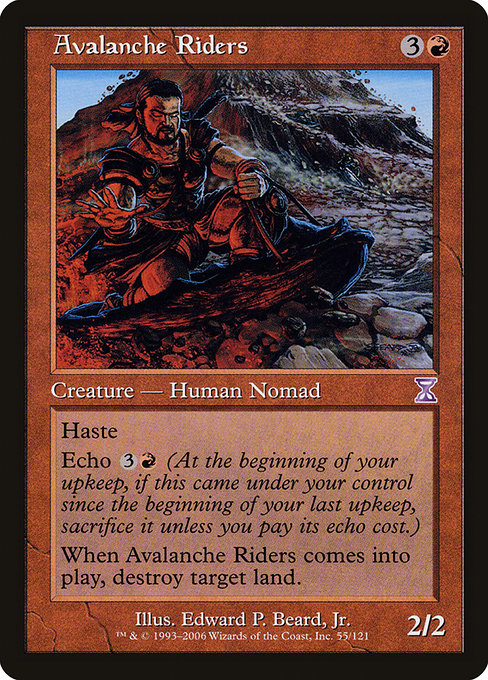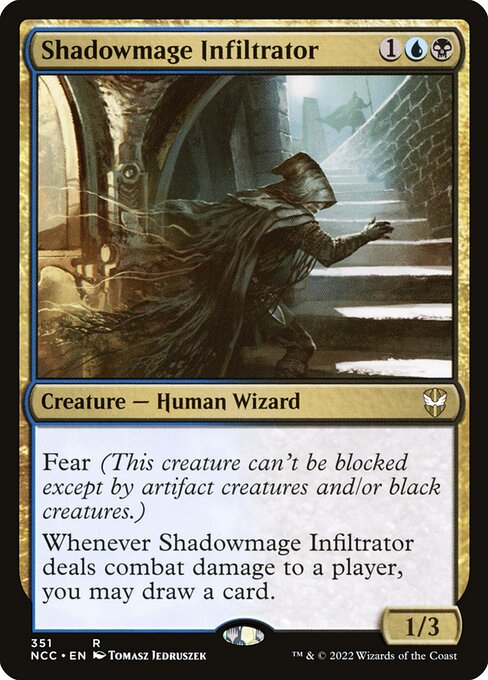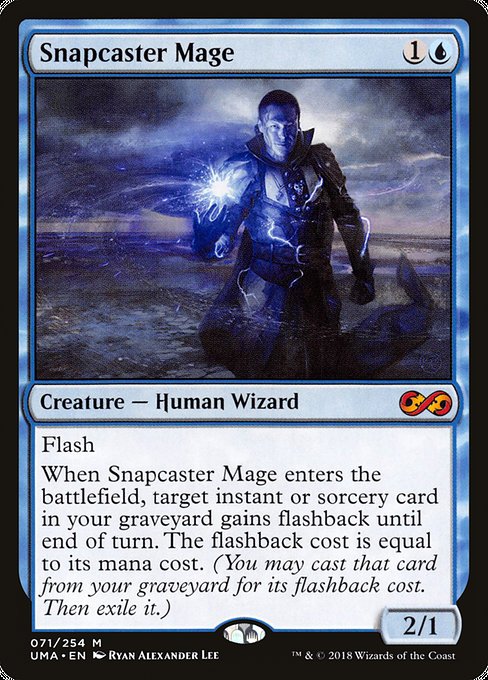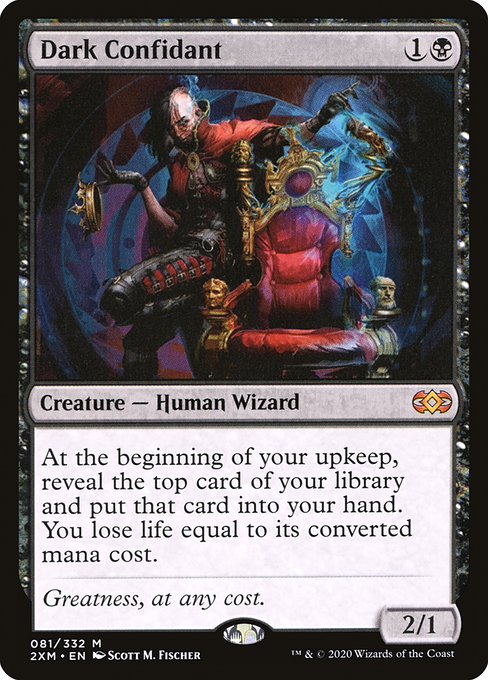landofMordor
Administrator
Some Cube design trends we take to be unmitigated positives may be the same trends that hinder our cubes' approachability.
Even once the cards are purchased and the players are seated, Cube still has significant barriers to entry for its drafters. Historically, Cube has optimized for mechanical novelty and replayability above any other metrics, but it’s not always fun to jump in the deep end with unintuitive, unfamiliar, technical, flavorless game pieces, especially for newcomers to the format.
Sometimes I wonder whether I sound like this to a newcomer to Cube: “Want to try a 4-hour session of Magic? I promise every card is a special snowflake once you draft it, grok it, look up the updated Oracle text, and integrate it into a deck you don’t know how to build!” For some groups, that really is all upside ‘cuz everybody in the group is a grizzled Extended washout who’s older than sleeves. But if the Cube format is to spread and diversify, then our cubes will need gentler on-ramps for the Commander player, the Arena free-to-player, or the FNM drafter.
Mark Rosewater recently used the analogy of a “zero-entry pool” to describe a format that can fit any familiarity, and that’s exactly what Cube needs to become if it is to diversify and thrive. Here’s four examples I’m trying to apply in my own cubes:
1. Fewer Darwins, more Jons
Darwin Kastle's Invitational card was more powerful in its Standard format than Jon Finkel's. But that's not obvious on a first read. Echo reads like a colossal downside on an under-rate creature, riddled with sunk-cost fallacy. Sure, it’s “easy” to evaluate the Riders when you reduce it to a little JSON of cost-effect transactions and card advantage: 3 damage and resource denial for
Contrast the Riders to Shadowmage Infiltrator -- drawing cards is self-evidently cool, and Fear obviously enables the triggered ability in a way that allows the newcomer to grok the ceiling of the Infiltrator's power. And how can one reach that ceiling, you ask? Just… keep it in play, exactly like every other creature in Magic. The “Jons” match the players’ preconceived notions much better than the “Darwins”.
Cubes in the pattern of famous MTGO cubes are already pretty long on the “Darwins”, uninviting designs with counter-intuitive power. That’s not to say you can’t or shouldn’t put downsides or funky text boxes in your cube! Maybe those downsides are super flavorful (I'll get to that later) or provide excellent depth. I'm not saying "Darwins" are strictly bad for a cube, or that this should replace "power" as the sole metric for a designer to optimize; only that the “Jons” are likely to draw in newcomers more easily.
MTGO VC “Darwins”: Sylvan Library, Balance, Thalia, Guardian of Thraben, Dream Halls, Putrid Imp… heck, even Jackal Pups and Goblin Guide
MTGO VC “Jons”: Sower of Temptation, Student of Warfare, Young Pyromancer
2. Fewer Future Sights, more Innistrads
Steamflogger Boss referenced a subtype that wouldn’t be printed for a literal decade. In its Limited format, Boss was surrounded by references to types that didn’t exist yet, vanilla creatures with superfluous types, and either Corinthian architecture or deep-water mollusks (which exactly is hard to say). Future Sight, runaway winner of “most self-congratulatory card file” in Magic, makes me glad I wasn’t playing back then.
At the opposite end of the spectrum, Innistrad’s mechanical cohesion was a slam-dunk, launching a new era of Magic set design. Every single card in ISD draft, from common to mythic, gets paid off mechanically (even Stony Silence shuts off 17 artifacts). Every card!
Steamflogger Boss throws drafters into the deep end. Village Cannibals is the gentle slope of a zero-entry pool – players can pursue Level One (humans dying) successfully, and pursue Level Two (Morbid, Aristocrats, etc) as their skill and familiarity develop.
3. Fewer Kais, more Antoines
There’s such a thing as too much mechanical payoff, too. Among the Invitational cards, Kai Budde’s nod stands out as being an oddly specific payoff to the… morphing Wizard-sacrificing control deck? That wasn’t on my 2002 bingo card. On the other hand, Antoine Ruel’s card is no less a Swiss Army knife – it can tutor everything from Zombie payoffs to combo pieces – but crucially, the depth of complexity is entirely up to the player, and the card will function just fine even if you get Savannah Lions. “Antoines” allow you to opt-in to hardcore puzzling, while “Kais” force the issue.
It's easy for Cube owners (myself included) to overindulge the “Kais”, because it’s fun to spiderweb mechanics, but that’s how we end up with Shadowmoor. It's not fun to get beat over the head with synergy signposts (especially for things that aren't fun in the first place). Sometimes players just want something that works, but we cube designers are too busy to notice: we’re scouring Scryfall for an Orzhov gold card that’s more “interesting” than Vindicate.
MTGO VC “Kais”: Rona, Herald of Invasion, Displacer Kitten, Loran of the Third Path, the entire Storm archetype
MTGO VC “Antoines”: Fury, Eternal Witness, Restoration Angel, Lightning Bolt
4. Fewer Tiagos, more Bobs
Tiago Chan and Bob Maher. Both invitational cards are competitive legends at a high power level. Any design-oriented contrast between the two mostly boils down to flavor. Snapcaster is a great game piece, but its story is inscrutable. (Took me a decade to realize its ISD art implies that geist-fueled arm-cannon spells are cast like FMA’s Roy Mustang summons fire.) Meanwhile, Dark Confidant’s mantra of “greatness, at any cost” epitomizes Black’s philosophy, and its gameplay effect enacts that same ethos, adding up to one of the most evocative and intuitive designs of all time.
“Tiago cards” are perfectly functional but evince a missed opportunity to marry mechanics to theme and flavor. “Bob cards” use their flavor to make Magic feel like a proper wizards’ duel, heightening our immersion in and enjoyment of Magic.
MTGO VC “Tiago cards”: Vendilion Clique, Eidolon of the Great Revel, Hellrider, Expressive Iteration
MTGO VC “Bob cards”: Thraben Inspector, Lingering Souls, Ravages of War
TL;DR: A focus on thematic cohesion and lenticular appeal can help Cube bring in newcomers and grow the format, like a zero-entry pool can be enjoyed by all swimmers. An approachable, appealing cube will tend to focus on cards which are:
- Intuitively powerful (think Shadowmage Infiltrator),
- Thematically cohesive (think Innistrad),
- Inherently functional (think Ranger of Eos), and
- Flavorfully immersive (Dark Confidant).
What elements of your cube make it easy or difficult to bring in newcomers? Share in the comments below!
Last edited:

